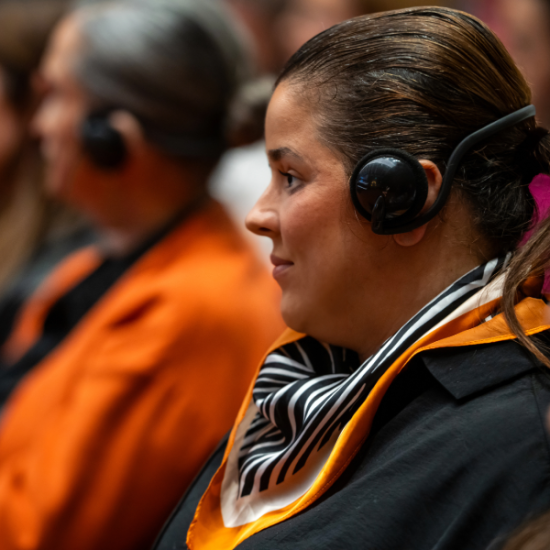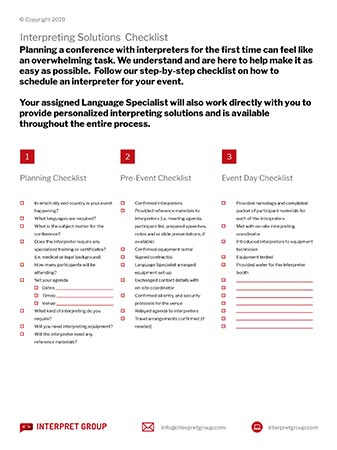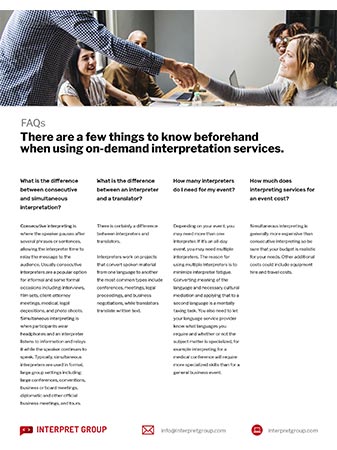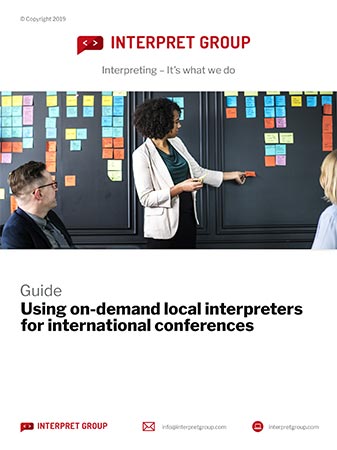Hosting an event with participants from diverse languages and cultures is both exciting and complex. Interpretation helps bridge those differences so that every attendee feels part of the conversation. When planned well, it strengthens communication, keeps audiences engaged, and sets up a professional, inclusive tone for the entire event.
But when interpretation planning is left to the last minute, or when key details are overlooked, small mistakes can turn into big problems: confusion among participants, awkward pauses, or even miscommunication that undermines the event’s success.
To make sure everything runs smoothly, here are some key questions to consider when planning interpretation for your next event.
What languages will be spoken and by whom?
The foundation of good interpretation planning begins with knowing your audience. Which languages will the speakers use, and which languages do the participants understand?
Clarifying this early helps your language service provider (LSP) match your event with the right professional who not only has native-level fluency but also understands the context and terminology of your field. For instance, a medical conference will require specialists who are familiar with healthcare terminology, while a corporate summit might need interpreters well-versed in business or legal vocabulary.
Sharing this information upfront allows your LSP to recommend the best-qualified language specialist for your event.
What type of interpretation fits my event format?
Not all interpretation works the same way. Choosing the right method depends on your event’s size, format, and flow.
Consecutive interpretation works best for smaller meetings, workshops, or speeches where the speaker pauses for translation. It creates a personal feel but extends the total speaking time.
Simultaneous interpretation is ideal for large conferences, fast-paced discussions, or multilingual panels. Interpreters work in real time from soundproof booths, and attendees listen through headsets. It’s seamless with the necessary technical support and specialized equipment.
Whisper interpretation or chuchotage suits very small groups or one-on-one conversations where an interpreter whispers the translation directly to the listener, seated nearby
A reliable LSP can help you choose the right interpretation type and number of interpreters, balancing quality and cost.
Should interpretation be on-site or remote?
Next, it’s time to decide how your interpretation will be delivered. Both on-site and remote options have advantages, and each suits different kinds of events.
On-site interpretation allows interpreters to directly observe speakers’ tone and gestures, fostering better connection and nuance. It’s great for conferences, government meetings, or negotiations where personal engagement matters. However, you’ll need to account for transport, possible accommodation, and setup time.
Remote interpretation, on the other hand, offers flexibility and lower logistical costs. It’s ideal for hybrid or fully virtual events. To ensure a seamless experience, it is essential to have a reliable internet connection, clear audio and video, and a secure platform.
If you’re not sure which approach works for your event, ask your LSP to walk you through the best option based on your budget, venue, and event goals.
What logistics and equipment will I need?
Interpretation involves more than just interpreters; it also requires the right tools. What kind of setup will facilitate smooth communication for everyone?
For simultaneous interpretation, you’ll typically need:
- Headsets and receivers for participants
- Soundproof booths for interpreters
- Microphones, consoles, and audio systems
- On-site technicians to handle setup and support
If space is limited, your LSP may suggest portable interpreting systems or smaller booths. But remember, equipment takes up physical space and will need power supply, cabling, and a clear view of the stage or screen.
It’s also important to confirm access with the venue ahead of time: when technicians can enter, where equipment will be placed, and how much setup time is allowed. Careful attention to these details ensures a smooth process and helps avoid unnecessary delays.
How can I make sure everything runs seamlessly?
Once all plans are in place, the final question is: Have we tested the full setup?
Whether your event is on-site or virtual, a pre-event rehearsal with interpreters and technicians helps identify any potential issues early.
Additionally, providing interpreters with materials in advance, such as presentations, speaker notes, and terminology lists, helps ensure consistent, high-quality interpretation throughout your event.
A little extra preparation can be the difference between an event that flows effortlessly and one that runs into communication hiccups.
Ready to Plan Your Multilingual Event?
Successful multilingual events don’t happen by chance. They’re the result of careful planning and expert execution. Partnering with the right language services team allows every participant in the event to engage fully, share ideas confidently, and contribute meaningfully to the conversation. That’s how effective interpretation turns an event into a truly connected experience.
At Interpret Group, we work closely with each client to design seamless multilingual experiences from start to finish. Our interpreters, technicians, and project managers handle every detail, selecting the right interpretation method, coordinating logistics, managing equipment, and maintaining clarity throughout each session.
Let each voice be heard through the power of interpretation. Contact us today for more information.









